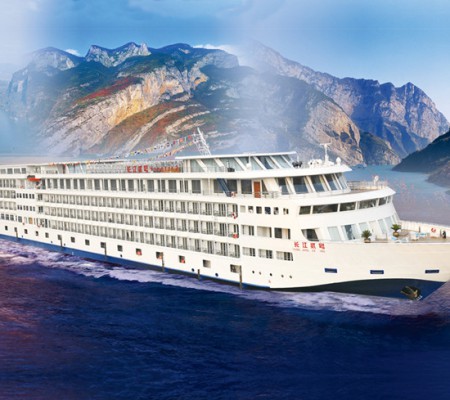Iceland
Iceland Overview
Chinese Name: English IPA: Location: Population (city): Language: Zip code: Tel code: Time zone:
Traveling from Iceland to the main cities of China, such as Beijing, Shanghai, Guangzhou, or Kunming, typically involves flying from Keflavik International Airport (KEF) in Iceland with at least one layover in a major international hub. Here’s a step-by-step guide on how to plan your trip:
1. Flight from Iceland to China
- Departure Airport: You will depart from Keflavik International Airport (KEF), which is the main international airport in Iceland, located near Reykjavik.
- Airlines: Since there are no direct flights from Iceland to China, you will need to take a connecting flight. Several international airlines operate on this route, with layovers in major hubs like London, Frankfurt, or Dubai. Some options include:
- Icelandair (via a connecting flight in London, Frankfurt, or Copenhagen)
- Emirates (via Dubai, connecting to cities like Beijing, Shanghai, Guangzhou)
- Lufthansa (via Frankfurt, connecting to Beijing, Shanghai, Guangzhou)
- Qatar Airways (via Doha, connecting to Beijing, Shanghai, Guangzhou)
- Air France (via Paris, connecting to Beijing, Shanghai)
- Finnair (via Helsinki, connecting to Beijing, Shanghai)
- Flight Duration: The total flight time from Iceland to China will be around 12 to 16 hours, depending on your stopover city and the length of the layover.
- Keflavik to Beijing: Typically takes about 14-16 hours (with a layover in a European or Middle Eastern hub)
- Keflavik to Shanghai: Typically takes about 14-16 hours (with a layover in a European or Middle Eastern hub)
- Keflavik to Guangzhou: Typically takes about 14-16 hours (with a layover in a European or Middle Eastern hub)
- Keflavik to Kunming: This will usually involve a longer layover, totaling around 16-18 hours.
2. Flight Connections
- Stopover Cities: Common stopover cities for flights from Iceland to China include:
- London (via British Airways or Icelandair)
- Frankfurt (via Lufthansa)
- Copenhagen (via SAS)
- Dubai (via Emirates)
- Doha (via Qatar Airways)
- Paris (via Air France)
- Helsinki (via Finnair)
- The layovers in these cities typically last between 1-4 hours, depending on the airline and connection time.
3. Visa Requirement
- Chinese Visa: Indian passport holders (if you are traveling with an Indian passport) will need to obtain a Chinese visa before traveling to China. You can apply for:
- Tourist Visa (L Visa) if traveling for leisure
- Business Visa (M Visa) if traveling for business
- The visa application process generally involves submitting documents like your passport, completed application form, flight itinerary, hotel bookings, and possibly an invitation letter from a Chinese entity. Processing time takes about 4-7 working days.
- Transit Visa: If you have a layover in a third country, you may need a transit visa for that stopover city, so confirm the requirements for your layover destination in advance.
- Visa on Arrival: China does not offer visa-on-arrival for Icelandic citizens, so it’s essential to get your visa before departing.
4. Arriving in China
- Once you arrive in China, you will likely land at one of the following major international airports based on your final destination:
- Beijing Capital International Airport (PEK) for Beijing and northern China
- Shanghai Pudong International Airport (PVG) for Shanghai and eastern China
- Guangzhou Baiyun International Airport (CAN) for Guangzhou and southern China
- Kunming Changshui International Airport (KMG) for Kunming and southwestern China
- Customs and Immigration: Be prepared to present your passport, visa, and any necessary documents at immigration. After clearing customs, you can collect your luggage.
5. Domestic Transfers in China
- If you need to travel to another city within China, you have several options:
- Domestic Flights: China has an extensive domestic flight network, and you can easily book flights between cities like Beijing, Shanghai, Guangzhou, and Kunming.
- High-Speed Rail: For shorter distances, China’s high-speed trains are an efficient and comfortable way to travel between cities.
- Public Transport: Major cities have excellent public transportation systems, including metro, buses, and taxis.
6. Important Travel Tips
- Language: Mandarin Chinese is the official language in China. While English is spoken in some areas, especially in major cities and airports, it’s helpful to learn a few basic phrases or use a translation app.
- Currency: The official currency is the Chinese Yuan (CNY). You may need cash for some local purchases, so consider exchanging money or using ATMs once in China. Credit cards are widely accepted in urban areas.
- SIM Cards and Connectivity: You can purchase a local SIM card for your phone at the airport upon arrival in China. Popular apps like WeChat, Alipay, and Baidu are essential for communication and payments within China, as international services like WhatsApp and Facebook are blocked.
- Weather Considerations: China’s climate varies greatly depending on the region. For example:
- Beijing can be very cold in winter and hot in summer.
- Shanghai has a humid subtropical climate, with hot summers and mild winters.
- Guangzhou is warm and humid year-round.
- Kunming enjoys a mild climate, though it can be cooler in the evenings, especially in winter.























